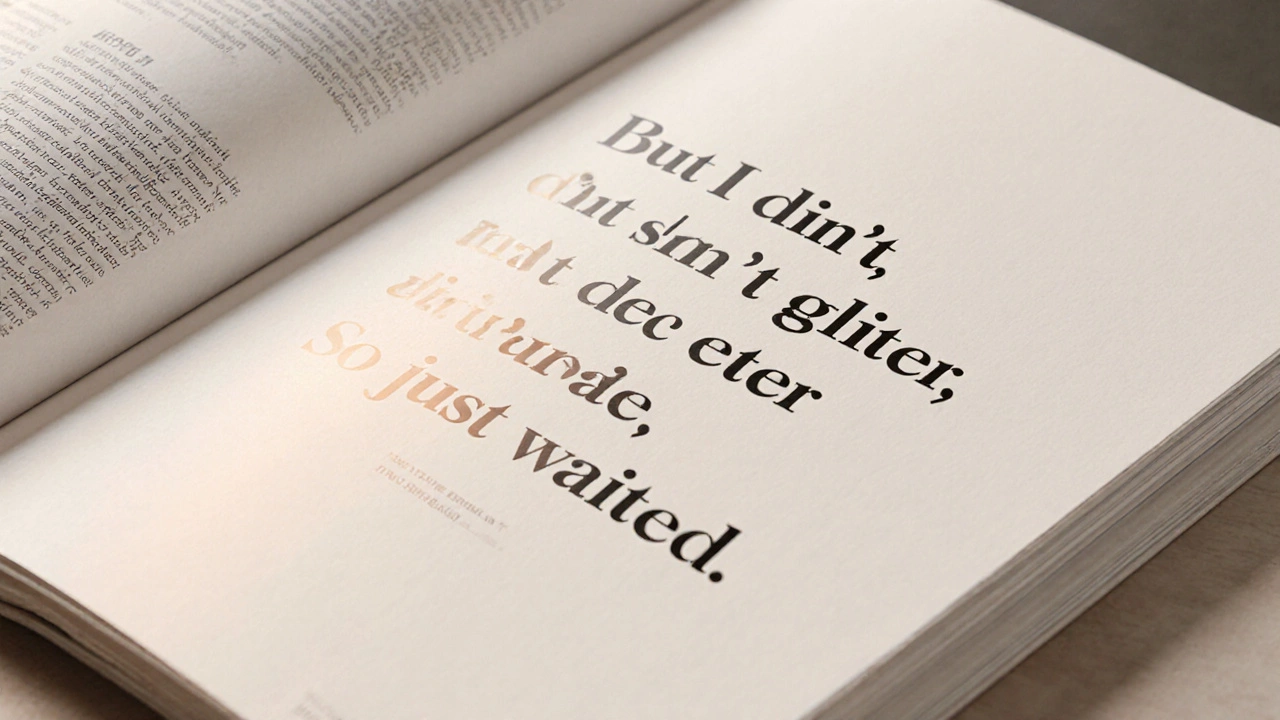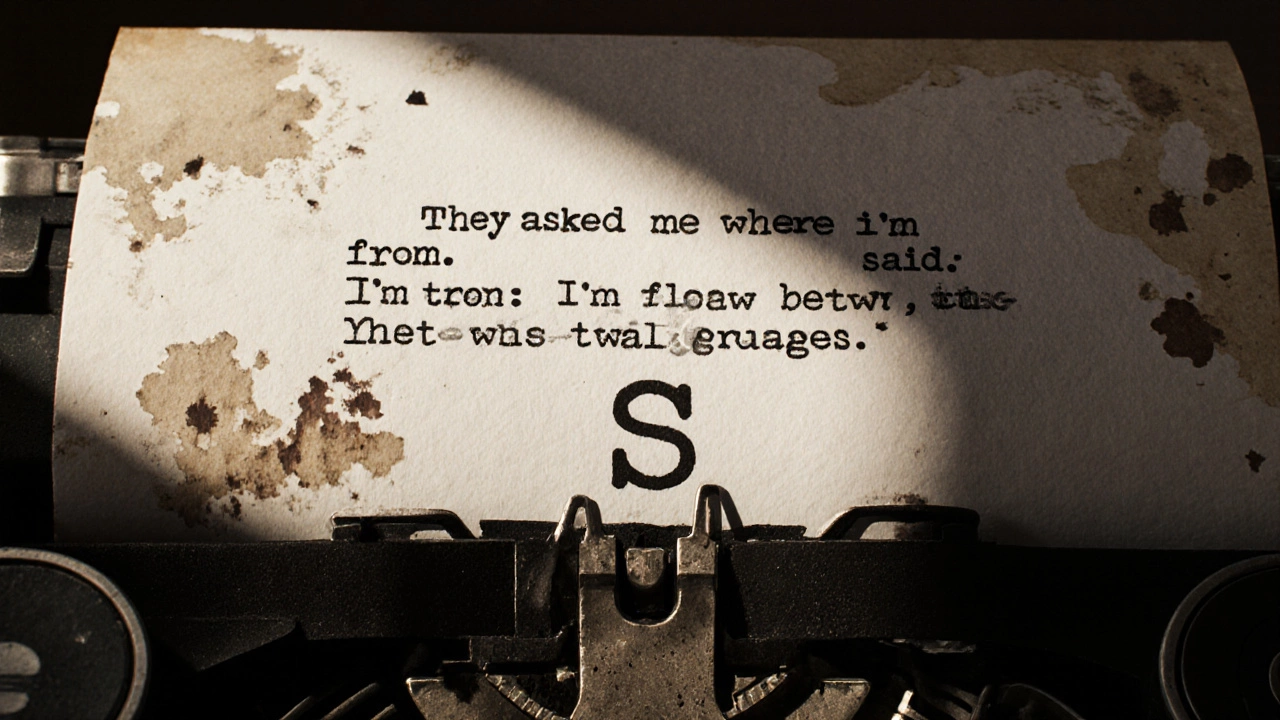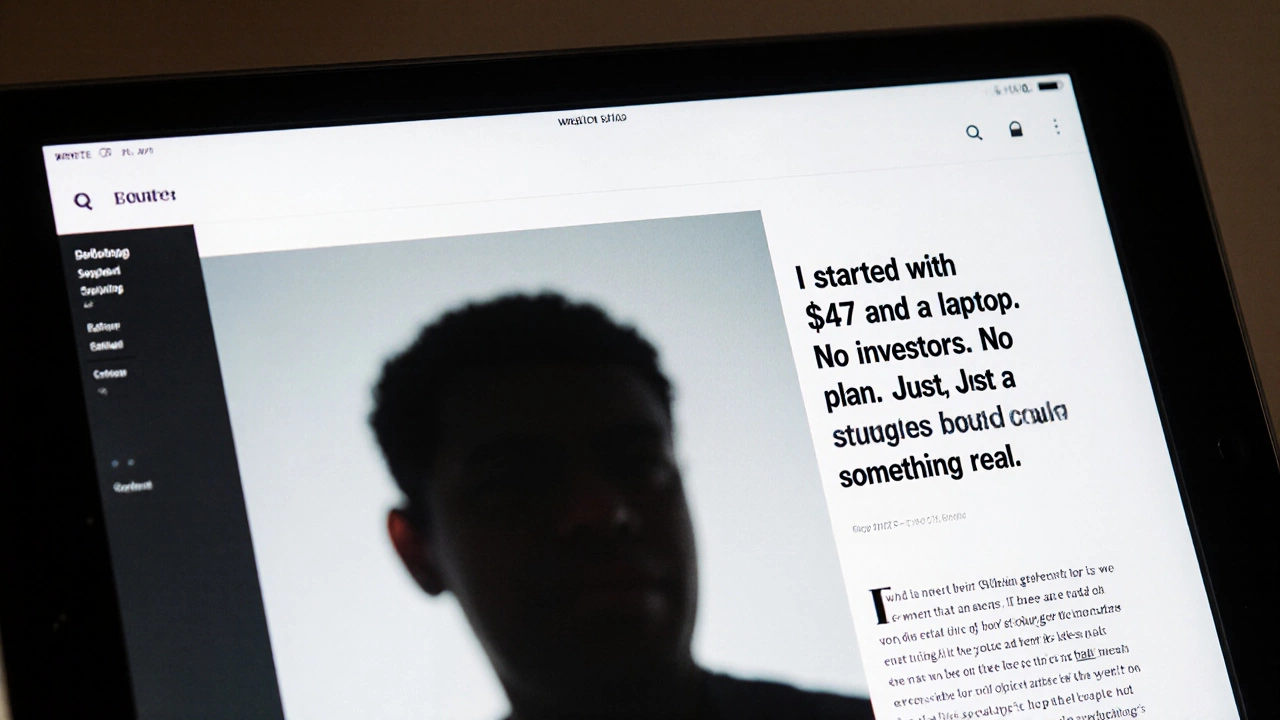What Makes a Good Pull Quote? Design, Impact, and Real Examples

Pull Quote Validator
Check Your Quote
Validation Results
Ever read an article and stopped dead because one line jumped off the page? That’s a pull quote. It’s not just decoration. A good pull quote turns a skimmed paragraph into a moment you remember. It’s the difference between reading something and feeling it.
Why pull quotes matter more than you think
Most people scroll. They don’t read word-for-word. A pull quote grabs attention when attention is scarce. It works because it’s a shortcut to emotion. A well-placed line from a powerful speaker, a raw confession, or a bold truth - when pulled out and styled right - becomes the reason someone stops scrolling.
Look at any major magazine or news site. The pull quote isn’t an afterthought. It’s a strategic tool. Publishers use it to break visual monotony, reinforce key ideas, and create emotional peaks. In a world flooded with content, the right quote becomes a beacon.
What makes a pull quote actually good?
Not every standout sentence belongs in a pull quote. Here’s what separates the good from the cluttered:
- It’s self-contained. You shouldn’t need the paragraph before or after to understand it. If someone only reads the pull quote, they should still get the point.
- It’s emotional, not just smart. A clever line might impress. A line that stings, lifts, or surprises sticks. Think: "Failure is not the opposite of success; it’s part of it." That’s not just true - it feels true.
- It’s short. Three to eight words is ideal. More than ten and it loses punch. Less than three and it feels incomplete.
- It’s spoken, not written. Pull quotes work best when they sound like real human speech. Avoid corporate jargon. Avoid overly poetic fluff. If it reads like a textbook, it won’t land.
Bad pull quote: "The optimization of user engagement metrics leads to enhanced retention rates." - That’s not a quote. That’s a report.
Good pull quote: "I failed 87 times before I got it right. And I’m glad I didn’t quit." - That’s a story. That’s a person. That’s something you’ll remember.
Where to find the right quote
You don’t need to write a new quote. You need to find the right one. Start with interviews, speeches, or personal essays. Look for moments where the speaker pauses - where emotion cracks through the words. Those are your gold.
Here’s how to mine for them:
- Read the full text. Highlight every sentence that gives you a physical reaction - a chill, a laugh, a lump in your throat.
- Test each one alone. Say it out loud. Does it still make sense? Does it still move you?
- Trim it. Cut filler words. Remove "I think," "maybe," "in my opinion." Be ruthless.
- Check the context. Make sure the quote isn’t twisted by removing it. Authenticity matters.
One real example: In a profile of a cancer survivor, the author had a 200-word passage about losing hope. One sentence stood out: "I didn’t want to live, but I didn’t want to die either. So I just waited." That became the pull quote. Readers shared the article because of that line. Not because of the whole story. Just that one.

Design isn’t optional - it’s part of the message
A great quote in a boring font is like a song with no beat. It loses half its power.
Use contrast. Big font. Heavy weight. White space around it. A color that pops but doesn’t clash. Serif fonts often work better for emotional quotes - they feel human. Sans-serif can feel cold unless you’re going for modern, minimalist impact.
Placement matters too. Don’t stick it in the middle of a dense block. Give it room. Put it beside a photo. Float it to the left or right with text wrapping. Let it breathe. A pull quote should feel like a pause in the music.
And never use italics for pull quotes. Italics feel like whispers. Pull quotes need to shout - politely.
What to avoid
Here are the top mistakes that turn good quotes into noise:
- Using clichés. "Follow your dreams," "Believe in yourself," "Never give up." These are empty. They’ve been used so much they don’t mean anything anymore.
- Forcing a quote. Don’t pull a line just because it sounds impressive. If it doesn’t reflect the voice of the speaker, it’s fake.
- Using too many. One strong pull quote is better than three weak ones. More than two per article dilutes impact.
- Ignoring accessibility. If your quote is in a light gray font on a white background, people with vision issues won’t see it. Contrast ratio should be at least 4.5:1.

Real examples that worked
Let’s look at three real pull quotes that moved people:
- From a TED Talk on grief: "I didn’t lose my husband. I lost the version of the future we planned together." - This quote went viral on Instagram. People tagged friends. They saved it. It gave voice to something no one could say.
- From a business founder’s memoir: "I started with $47 and a laptop. No investors. No plan. Just a stubborn belief that I could build something real." - Used in a Forbes article. Commenters said it gave them courage to quit their job.
- From a poem about immigration: "They asked me where I’m from. I said: I’m from the space between two languages." - Published in a literary journal. Readers wrote letters saying they felt seen for the first time.
Each of these quotes works because they’re specific, human, and emotional. They don’t try to be profound. They just are.
How to test if your pull quote is strong
Before you publish, do this:
- Print the article. Cover everything except the pull quote. Read only that line. Does it still make sense? Does it still hit?
- Ask someone who hasn’t read the article: "What do you think this is about?" Their answer tells you if the quote captures the heart of the piece.
- Wait 24 hours. Come back to it. If it still feels powerful, you’ve got it.
If the answer is "meh," go back. Find a better line. Or rewrite the quote to make it sharper. Don’t settle.
Final thought: It’s not about the quote - it’s about the moment
A good pull quote doesn’t just repeat a thought. It creates a pause. A breath. A moment where someone stops, thinks, and maybe even feels less alone.
That’s why it’s not just design. It’s connection.
Can any quote be turned into a pull quote?
No. Only quotes that are clear on their own, emotionally resonant, and concise work well. Generic lines like "Believe in yourself" or overused phrases don’t cut it. The best pull quotes come from authentic moments - raw, specific, and human.
How long should a pull quote be?
Ideal length is 3 to 8 words. Anything longer than 10 words loses its punch. Shorter than 3 words can feel incomplete. The sweet spot is enough to carry meaning but not so much that it becomes a paragraph.
Should pull quotes be in italics?
Avoid italics. They make quotes feel quiet, like a whisper. Pull quotes need presence. Use bold, larger font size, and ample white space instead. Italicized text is better for emphasis within body copy, not for standout quotes.
How many pull quotes should I use in one article?
One is usually enough. Two max. More than that overwhelms the reader and dilutes the impact. Each pull quote should feel like a highlight, not a decoration. Quality beats quantity every time.
Can I use a pull quote from someone else’s work?
Yes - as long as you credit the source clearly. Always include the speaker’s name and where the quote originally came from (book, interview, speech). Plagiarism is unethical and damages trust. Proper attribution turns a quote into a bridge, not a theft.